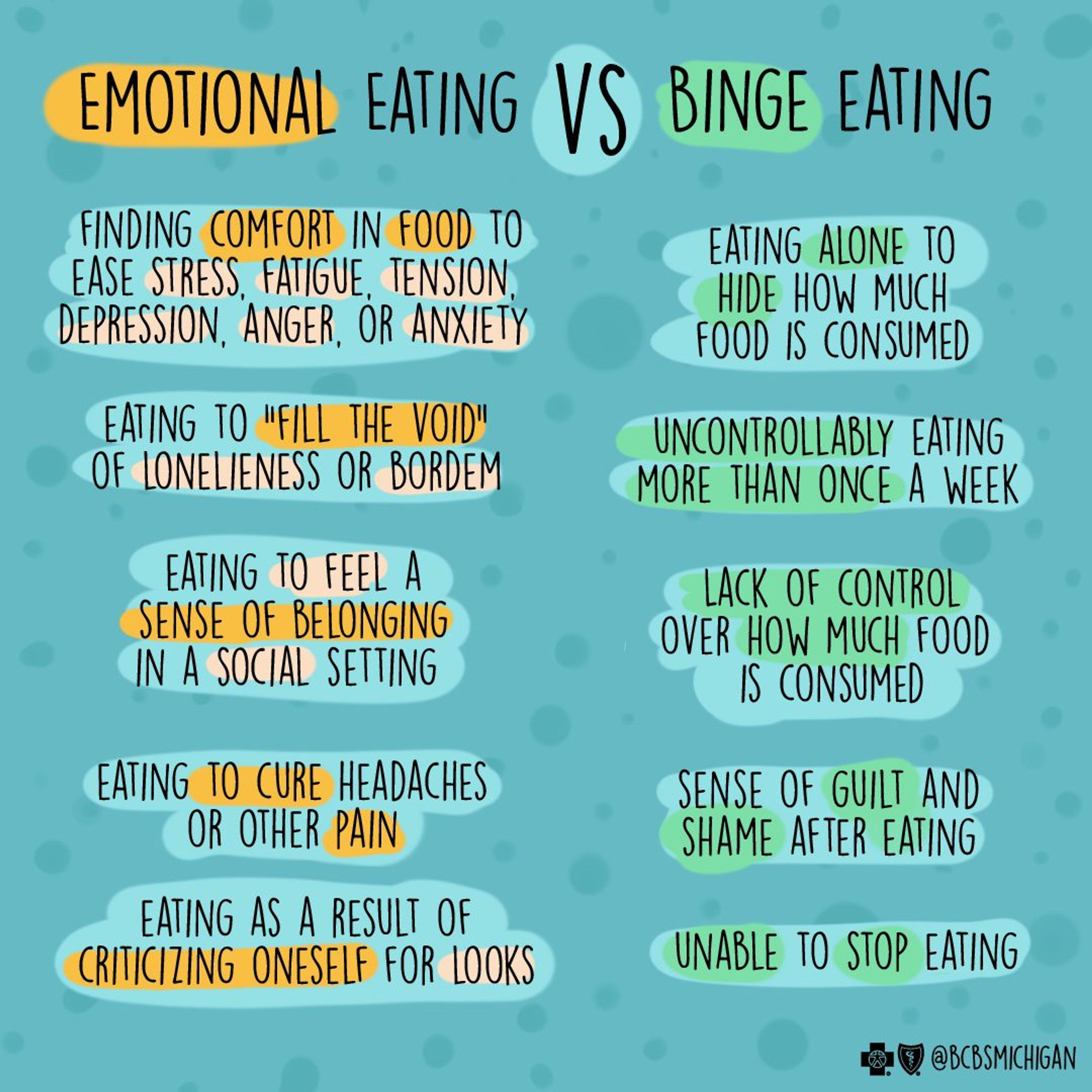Shanthi Appelö is a registered dietitian and health and wellness spokesperson for Blue Cross Blue Shield of Michigan based in Detroit. Passionate about the science of nutrition and behavior, Shanthi has experience working in clinical nutrition, public health and teaching in the university setting. She earned her Master of Science in Public Health Nutrition from the University of Tennessee and has a research background in maternal and child health nutrition and public health, as well as a Certificate of Training in Obesity Interventions from the Commission on Dietetic Registration. In her free time, she enjoys experimenting in the kitchen, exploring the outdoors, working on art and spending time with family.
Understanding Binge Eating Disorders
4 min read


Binge eating vs. emotional eating
- A preference to eat alone so others cannot see how much food is consumed
- Experiencing episodes of uncontrolled eating more than once a week
- Feeling a lack of control over how much food is consumed
- Feeling guilt and shame after eating
- Feeling unable to stop eating
Cultural pressures and family history
- Binge eating disorder can run in families, according to the U.S. Department of Health and Human Services. A genetic component was identified in 2016, with researchers pinpointing a specific gene linked to binge eating.
- Childhood trauma, including hurtful comments targeting a person’s weight, body appearance or eating habits, have been tied to the likelihood of developing BED.
- Eating disorders like BED most commonly occur in industrialized countries where there is a cultural or societal importance placed on thinness.
How to get help
- Online chat: www.nationaleatingdisorders.org
- Call: (800) 931-2237 Monday to Thursday, 11 a.m. to 9 p.m. ET and Friday 11 a.m. to 5 p.m. ET
- Text: (800) 931-2237 Monday to Thursday, 3 p.m. to 6 p.m. ET and Friday 1 p.m. to 5 p.m. ET
- Crisis text line: For help immediately, text “NEDA” to 741741 to be connected with a trained volunteer










